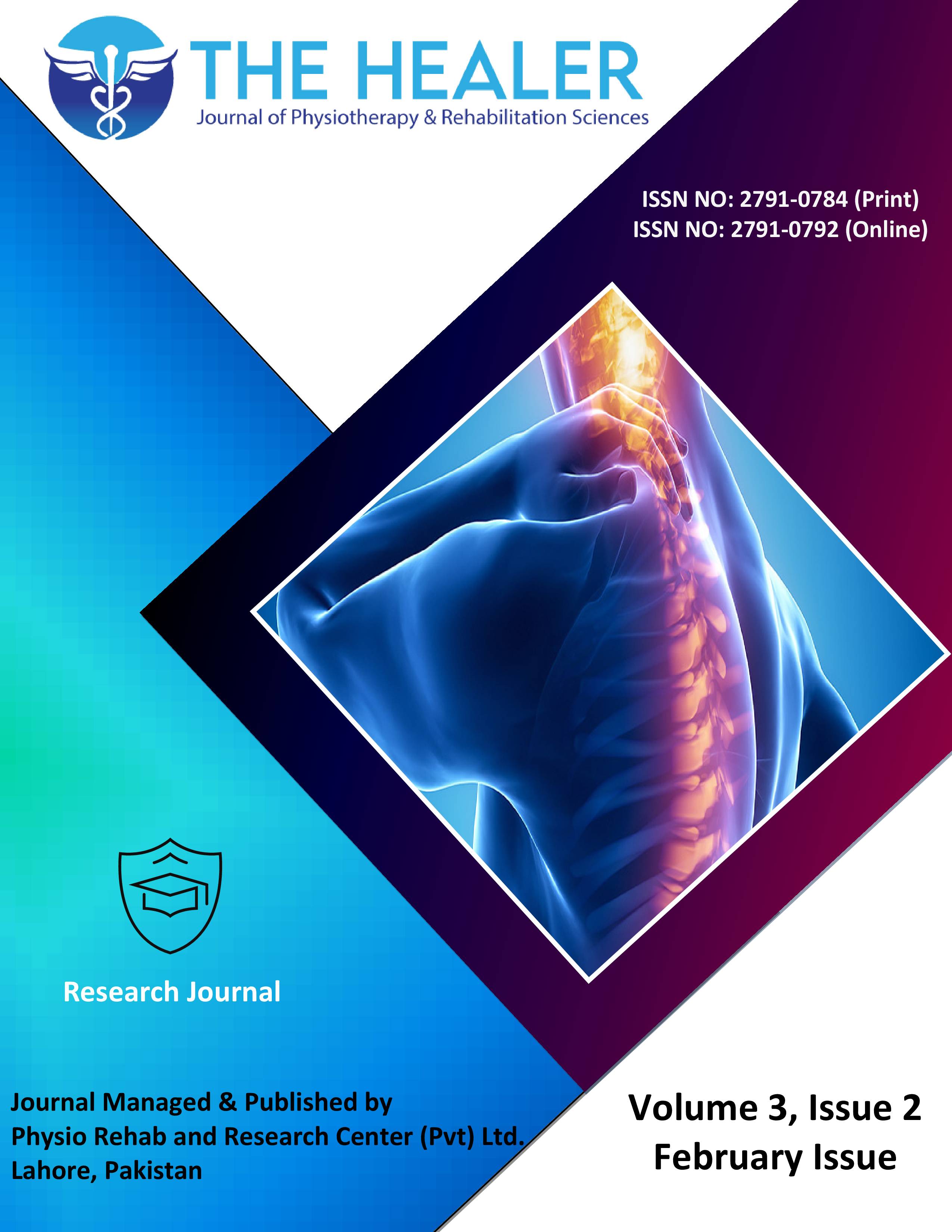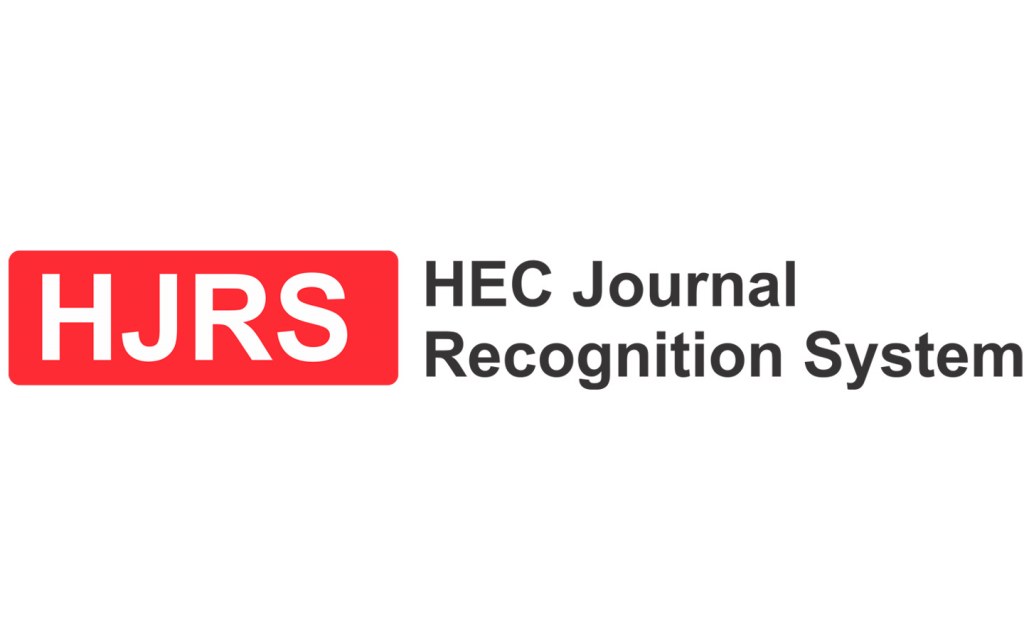Effectiveness of Plantar Fascial Mobilization and Static Stretching on Hamstrings Flexibility among Overweight Individuals
Mobilization & Static Stretching for Hamstrings Flexibility
DOI:
https://doi.org/10.55735/hjprs.v3i2.116Keywords:
hamstrings flexibility, plantar fascial mobilization, static stretchingAbstract
Background: Hamstrings tightness is commonly found among obese individuals and athletes. Many factors can result in hamstrings tightness such as overuse, bad posture and sports activities. It can result in major muscle imbalance which can predispose a person to muscle injuries. Objective: To evaluate the effectiveness of plantar fascial mobilization and static stretching on hamstrings flexibility in overweight individuals. Methods: This quasi-experimental study was conducted at the Physiotherapy department of Shalamar Hospital, Lahore for 6 months. About 50 participants were selected after meeting the eligibility criteria through non-probability purposive sampling. Participants were divided into two equal groups, Group A received static stretching of the hamstrings and Group B received plantar fascial mobilization for three consecutive days. Pre and post-treatment readings of the numeric pain rating scale and active knee extension were recorded in this study. Overweight individuals with having body mass index between 25 to 30 and age ranging from 18 to 35 years presented with hamstring tightness (at least 20 degrees of active knee extension were included in this study. Patients were excluded if they showed any red flags such as rheumatoid arthritis, fracture, tumor, osteoporosis, history of steroid use, lower limb injuries or surgery. The normality of data was assessed through the Shapiro-Wilk test. The difference between pre and post-treatment readings was calculated using paired sample t-test for this parametric data. Independent sample t-test was estimated for finding difference between groups. Results: Patients presented in both groups had an age between 18 and 50 with a mean age of 38.56+9.243. Data were analyzed through independent sample t-tests and paired sample t-tests. The results showed that plantar fascial mobilization along with static stretching was superior in improving hamstring flexibility (83.20+1.65) and reducing pain (1.96+1.48) than static stretching alone in improving hamstring flexibility (76.40+0.02) and in reducing pain (3.45+1.45). Conclusion: It concludes that both the treatment techniques, plantar facial mobilization and static stretching were effective in improving hamstring flexibility by increasing active knee extension and decreasing pain intensity however plantar fascial mobilization along with static stretching was superior to static stretching alone in improving the hamstring flexibility in overweight individuals.
References
Hatano G, Suzuki S, Matsuo S, et al. Hamstring stiffness returns more rapidly after static stretching than range of motion, stretch tolerance, and isometric peak torque. Journal of sport rehabilitation 2019; 28(4): 325-31.
Lee JH, Jung HW, Jang WY. A prospective study of the muscle strength and reaction time of the quadriceps, hamstring, and gastrocnemius muscles in patients with plantar fasciitis. BMC Musculoskeletal Disorders 2020; 21(1): 1-7.
Houston MN, Hodson VE, Adams KK, Hoch JM. The effectiveness of whole-body-vibration training in improving hamstring flexibility in physically active adults. Journal of sport rehabilitation 2015; 24(1): 77-82.
Kendall BJ. The acute effects of static stretching compared to dynamic stretching with and without an active warm up on anaerobic performance. International journal of exercise science 2017; 10(1): 53.
Zhou J-P, Yu J-F, Feng Y-N, et al. Modulation in the elastic properties of gastrocnemius muscle heads in individuals with plantar fasciitis and its relationship with pain. Scientific Reports 2020; 10(1): 2770.
Škarabot J, Beardsley C, Štirn I. Comparing the effects of self‐myofascial release with static stretching on ankle range‐of‐motion in adolescent athletes. International Journal of Sports Physical Therapy 2015; 10(2): 203.
Schroeder AN, Best TM. Is self myofascial release an effective preexercise and recovery strategy? A literature review. Current sports medicine reports 2015; 14(3): 200-8.
Sullivan KM, Silvey DB, Button DC, Behm DG. Roller‐massager application to the hamstrings increases sit‐and‐reach range of motion within five to ten seconds without performance impairments. International Journal of Sports Physical Therapy 2013; 8(3): 228.
Bradbury-Squires DJ, Noftall JC, Sullivan KM, Behm DG, Power KE, Button DC. Roller-massager application to the quadriceps and knee-joint range of motion and neuromuscular efficiency during a lunge. Journal of athletic training 2015; 50(2): 133-40.
Ozmen T, Gunes GY, Dogan H, Ucar I, Willems M. The effect of kinesio taping versus stretching techniques on muscle soreness, and flexibility during recovery from nordic hamstring exercise. Journal of bodywork and movement therapies 2017; 21(1): 41-7.
Cheatham SW, Kolber MJ, Cain M, Lee M. The effects of self‐myofascial release using a foam roll or roller massager on joint range of motion, muscle recovery, and performance: a systematic review. International journal of sports physical therapy 2015; 10(6): 827.
Do K, Yim J. Acute effect of self-myofascial release using a foam roller on the plantar fascia on hamstring and lumbar spine superficial back line flexibility. Physical therapy rehabilitation science 2018; 7(1): 35-40.
Grieve R, Goodwin F, Alfaki M, Bourton A-J, Jeffries C, Scott H. The immediate effect of bilateral self myofascial release on the plantar surface of the feet on hamstring and lumbar spine flexibility: A pilot randomised controlled trial. Journal of bodywork and movement therapies 2015; 19(3): 544-52.
Shetty K, Dsouza MR. Effectiveness of plantar fascia mobilization and passive stretching on hamstring muscle flexibility. International Journal of Health Sciences and Research 2018; 8(1): 134-7.
Hyong IH, Kang JH. The immediate effects of passive hamstring stretching exercises on the cervical spine range of motion and balance. Journal of Physical Therapy Science 2013; 25(1): 113-6.
Behm DG, Kay AD, Trajano GS, Blazevich AJ. Mechanisms underlying performance impairments following prolonged static stretching without a comprehensive warm-up. European journal of applied physiology 2021; 121: 67-94.
Kuruma H, Takei H, Nitta O, et al. Effects of myofascial release and stretching technique on range of motion and reaction time. Journal of Physical Therapy Science 2013; 25(2): 169-71.
Moran RN, Hauth JM, Rabena R. The effect of massage on acceleration and sprint performance in track & field athletes. Complementary therapies in clinical practice 2018; 30: 1-5.

Downloads
Published
How to Cite
License
Copyright (c) 2023 The Healer Journal of Physiotherapy and Rehabilitation Sciences

This work is licensed under a Creative Commons Attribution 4.0 International License.
CC BY












